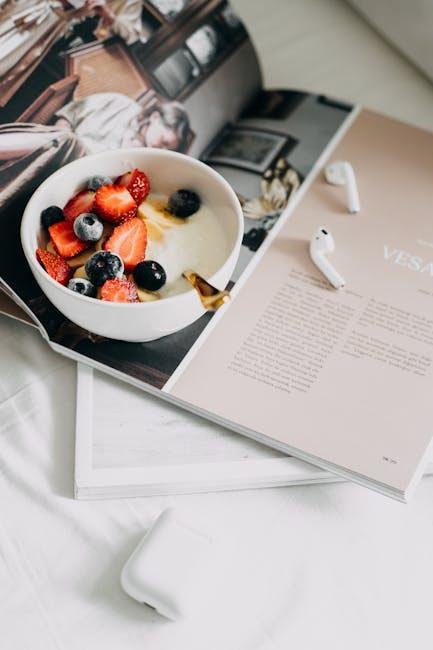In a world that never seems to pause, where the demands of daily life often overshadow our need for rest, establishing a consistent sleep routine can feel like an elusive goal. Yet, the importance of quality sleep is indisputable; it is the cornerstone of our physical health, emotional well-being, and cognitive function. A well-structured sleep routine not only helps you drift into slumber with ease but also enhances the quality of your waking hours. Whether you’re a night owl struggling to catch the right Zs or a busy parent seeking peaceful nights amidst chaos, crafting a sleep routine that sticks is within your reach. In this article, we’ll explore practical strategies, helpful tips, and the science behind sleep to guide you in creating a personalized regimen that transforms how you experience rest—instead of merely hoping for change, you can embrace a new rhythm that rejuvenates your life.
Crafting Your ideal sleep Environment for Restful nights
Creating a sanctuary for sleep is essential for achieving those coveted restful nights. Start by focusing on lighting. Soft, warm tones can set the mood for relaxation, while harsh, shining lights can interfere with your body’s natural circadian rhythms. Consider implementing blackout curtains to block out external light sources, ensuring a darkened atmosphere conducive to sleep. You might also want to explore aromatherapy; lavender and chamomile scents can promote relaxation and enhance your sleep quality.
Temperature plays a pivotal role in your sleep environment, with most experts recommending a room temperature between 60-67°F (15-19°C). A cozy bed is equally vital—investing in a quality mattress and pillows that support your preferred sleeping position can make a world of difference. Lastly, limit noise disruptions by utilizing white noise machines or calming sounds that can definitely help drown out background noise. To summarize, here are key elements to consider:
- Lighting: Use soft, warm light and blackout curtains.
- aromatherapy: Explore calming scents like lavender and chamomile.
- Temperature: Maintain a range of 60-67°F (15-19°C).
- Comfortable bedding: Invest in a supportive mattress and pillows.
- Noise control: Use white noise machines or soothing sounds.

Understanding Your Unique Sleep Cycle to Maximize Rest
Your sleep cycle is as unique as your fingerprint,influenced by genetics,lifestyle,and daily habits. By understanding the stages of sleep, you can tailor your routine to improve the quality of your rest.Circadian rhythms, which govern your sleep-wake cycles, respond to external cues like light and temperature. Identify your natural tendencies—are you an early riser or a night owl? Mapping these preferences allows you to set a schedule that aligns with your individual requirements, helping you feel more refreshed and alert.
To effectively harness the power of your sleep cycle, consider implementing these strategies:
- Consistent Sleep Schedule: Aim to go to bed and wake up at the same time every day.
- Environment Optimization: Create a restful atmosphere by reducing noise, adjusting lighting, and controlling temperature.
- Wind down Ritual: Develop a pre-sleep routine that signals your body it’s time to relax, such as reading or gentle yoga.
| sleep Stage | Duration | Benefits |
|---|---|---|
| Light Sleep | 50% of total sleep | Essential for body recovery and memory consolidation |
| Deep Sleep | 20-25% of total sleep | Critical for physical restoration and hormonal balance |
| REM Sleep | 20-25% of total sleep | Important for cognitive functions,creativity,and dream processing |

Establishing Consistent Bedtime Rituals for Better Sleep Quality
Creating a calming bedtime routine can considerably impact your sleep quality. Incorporating a series of relaxing activities signals to your body that its time to wind down. Consider adopting consistent practices each night, such as:
- Dim the lights to promote melatonin production.
- engage in gentle stretching or yoga to relieve tension.
- Enjoy a warm herbal tea, like chamomile or valerian root.
- Read a few pages of a book rather than scrolling through your phone.
- Reflect on your day and jot down thoughts in a gratitude journal.
To further enhance your ritual, you might consider creating a sleep-kind environment. this can be achieved by limiting distractions and ensuring comfort in your bedroom. Below is a simple table to guide you in setting up your ideal sleep sanctuary:
| Element | Tip |
|---|---|
| Lighting | Use soft, warm lights or candles. |
| Temperature | Keep your room cool, ideally between 60-67°F (15-19°C). |
| Noise Level | Consider white noise or soothing sounds. |
| Bedding | Invest in comfortable pillows and a cozy blanket. |

Nourishing Your Body Through Nutrition and Lifestyle Choices for Optimal Sleep
To create a sleep routine that truly rejuvenates your body and mind,it’s essential to focus on the interplay between nutrition and lifestyle choices. The foods you consume can significantly influence your sleep quality. Consider incorporating foods rich in magnesium such as spinach, almonds, and avocados, which promote relaxation and support better sleep cycles. Additionally, a diet abundant in whole grains, lean proteins, and fruits can stabilize blood sugar levels, preventing nighttime disturbances. On the other hand, you may want to limit intake of caffeine and alcohol, especially in the hours leading up to bedtime. Here’s a fast list of sleep-friendly snacks you might enjoy before heading to bed:
- Greek yogurt with honey
- Banana with almond butter
- Oatmeal topped with berries
in tandem with mindful eating, curating a lifestyle that prioritizes restful sleep is equally vital. Establishing a consistent sleep schedule—going to bed and waking up at the same time daily—reinforces your body’s internal clock. Incorporating relaxation techniques such as meditation, deep breathing, or gentle yoga before bed can also signal to your body that it’s time to wind down. To illustrate the benefits of these practices, see the table below showcasing common bedtime activities and their positive impact on sleep quality:
| Activity | benefit |
|---|---|
| Meditation | Reduces anxiety and promotes calmness |
| Reading | Shifts focus away from screens, preparing mind for rest |
| Gentle stretching | Alleviates tension and enhances relaxation |
Insights and Conclusions
In a world that never sleeps, establishing a consistent sleep routine might seem like a daunting task. Yet, as we’ve explored, crafting a sleep schedule that not only works for you but also sticks requires patience, persistence, and a little bit of creativity. By understanding your body’s natural rhythms, creating a soothing nighttime environment, and implementing mindful practices, you can transform your nights from restless to restorative.
As you embark on this journey towards better sleep, remember that there’s no one-size-fits-all approach. Embrace the trial and error, allow yourself the grace to adapt, and celebrate each small victory along the way. With time and dedication, the benefits of your newfound routine—enhanced mood, improved focus, and a revitalized spirit—will shine through every aspect of your daily life.
So, take a deep breath, dim the lights, and prepare for a more restful night ahead. Sweet dreams await those who choose to nurture the rhythm of their sleep.
